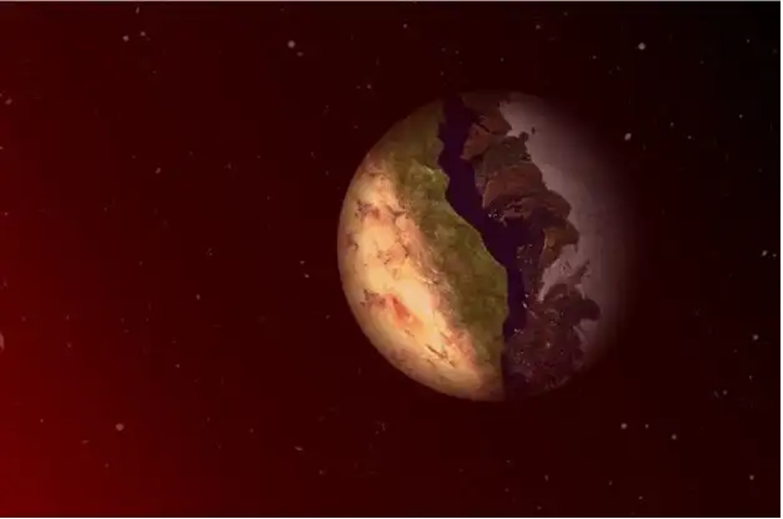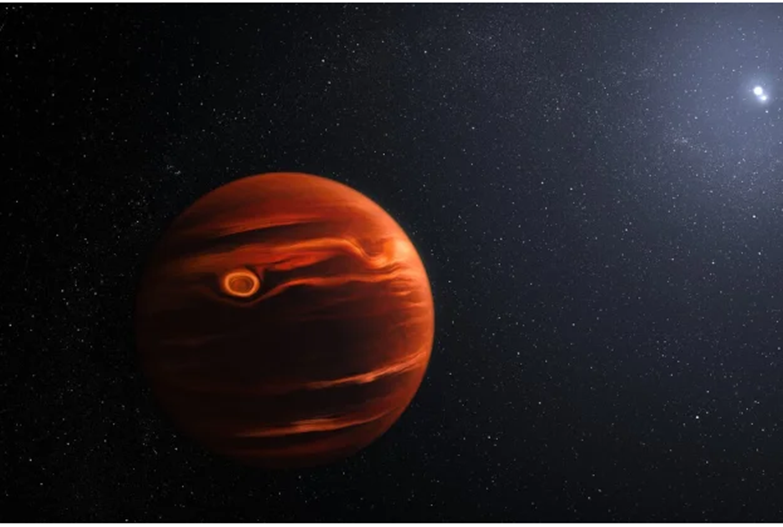The last planets unearthed by the Kepler telescope are revealed

Illustration of the last three exoplanets discovered by NASA's telescope.
Three new stars join the catalog of exoplanets identified in data from the telescope which completed its mission in 2018.
On October 30, 2018, NASA announced the end of the mission of the Kepler space telescope, which had run out of fuel . When the telescope was launched in 2009, barely a hundred exoplanets had been discovered. In nine years of activity, Kepler will have identified 3,324 planets whose existence has been confirmed, plus 2,961 objects for which astronomers are awaiting more data before deciding on their nature. A tremendous success for a mission that lasted nine years and ended when the instrument ran out of fuel. Just before, he conducted a final observation campaign which resulted today in the announcement of three new exoplanets.

This illustration conceptualizes the swirling clouds identified by the James Webb Space Telescope in the atmosphere of the exoplanet VHS 1256 b. The planet is about 40 light-years away and orbits two stars that are locked in their own tight rotation. Its clouds, which are filled with silicate dust, are constantly rising, mixing, and moving during its 22-hour day. NASA, ESA, CSA, J. Olmsted (STScI)
One last campaign
This last series of observations (the 19ᵉ) lasted only one month. And again, nearly out of reserves, Kepler was struggling to hold altitude, so the good enough data ended up being only seven days old. It is this last batch that was analyzed by Elyse Incha, from the University of Wisconsin-Madison and amateur astronomers from the Visual Survey Group, enthusiasts who looked for signs of transits on the luminosity curves of the stars scrutinized during these last moments.
Exoplanet VHS 1256 b and Its Stars (Nothing's Gonna Change My Love For You by Westlife) #Exoplanet
During a transit, that is to say during the passage of a planet in front of its star, the luminosity of the star attenuates very slightly, which makes it possible to deduce certain characteristics of the planet in orbit. around. This is how scientists identified three exoplanets, presented in a study published in the journal Monthly Notices of the Royal Astronomical Society . After reviewing the good quality data from the telescope, the group also reviewed the other, less accurate readings, which found a second transit for two of the three planets and therefore confirmed their existence. These are the first starsidentified for this campaign, but perhaps not the last: other exoplanets could be hiding in the degraded data.

This illustration conceptualizes the swirling clouds identified by the James Webb Space Telescope in the atmosphere of the exoplanet VHS 1256 b. The planet is about 40 light-years away and orbits two stars that are locked in their own tight rotation. Its clouds, which are filled with silicate dust, are constantly rising, mixing, and moving during its 22-hour day. NASA, ESA, CSA, J. Olmsted (STScI)
Three medium sized planets
Using the transit information, the astronomers were able to draw a summary portrait of the three new exoplanets: the smallest, K2-416 b, is about 2.6 times the size of Earth and orbits around its star (a red dwarf) in about 13 days. K2-417 b is just over three times the size of Earth and also orbits a red dwarf. It is closer to its star, which it circles in 6.5 days. Finally, EPIC 246251988 b (which remains a planetary candidate for not having identified a 2ᵉ transit) is almost four times the size of the Earth and orbits a star similar to the Sun in about ten days.

Artistic view of the Kepler space satellite. Credits: NASA
Although Kepler is no longer active, the hunt for exoplanets continues through other space telescopes and ground observatories. And since the start of the 2018 school year, it has been able to count on the support of the TESS satellite (Transiting Exoplanet Survey Satellite), which tracks exoplanets orbiting around the brightest stars closest to the Sun. It already has 333 validated exoplanets on its list and nearly 5,000 awaiting confirmation.
Source: websites

